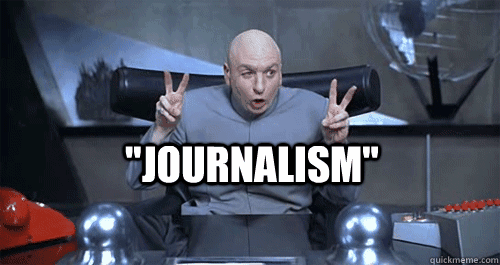Submarine Channel

Is Immersion the Future of Journalism? I
Is Immersion the Future of Journalism? I
2017 Is likely to be remembered as a significant year in the history of journalism, for good and for worse. It started with Trump’s presidential inauguration (January, 20), that confirmed a 2016 trend: thanks to the American tycoon, people’s interest in journalism revamped (so-called Trump bump).
by Davide Banis

The New York Times hit the threshold of 308k new digital subscribers, The Guardian topped 500k paying readers, and the Financial Times relies now on more than 700k paying subscribers. Numbers aside, Western public opinion has been persistently debating issues ascribable to the vague notion of “fake news”: trust, post-truth politics, fact-checking, accountability, reliability have all been key-words of the past 365 years. Few other times in history featured such a marked obsession for journalism.
“Digital media juggernauts that have been regarded as successful business ventures with remarkable potential suddenly revealed to be anything but cash cows.”
At the same time, the end of the year has been constellated by a series of signs that –according to many- presaged an imminent media apocalypse. Vice fell short of its € 800 M revenue target. Buzzfeed missed it by 20%, pushing away the rumored hypothesis of an IPO in 2018. Mashable –valued at € 250 M in March 2016– has been sold to trade publisher Ziff Davis at the fire-sale price of € 50 M.
In other words, digital media juggernauts that have been regarded as successful business ventures with remarkable potential until then suddenly revealed to be anything but cash cows.
The massive injections of money that these companies received from venture capitalists are likely not to turn into profits anytime soon. Observers quickly identified dwindling digital advertising revenues as the main culprit of this carnage. Facebook and Google –the two undisputed digital behemoths of advertising– simply don’t leave any piece of the cake to publishers, cashing in the 60% of all ad dollars.

Yes, that’s what Facebook and Google are.
What to make of this apparently contradictory tendencies? Well, in a nutshell, it seems that journalism’s societal relevance has never been higher, yet the field lacks viable business models.
“Facebook and Google –the two undisputed digital behemoths of advertising– simply don’t leave any piece of the cake to publishers.”
Paid subscriptions are growing but this cannot be enough to financially sustain the ever-increasing plethora of media outlets. At the end, we are fine with paying Netflix and Spotify because we know that there we can find almost all notable TV, cinema, and music content. The hypothesis of an equivalent uber-publisher for journalism appears remote, given the characteristics of the business.
Should we then just resign to the hypothesis of doomsday for journalism? Not so easily. There are still several monetization roads that are worth to be explored. To take the first one, we have to go neither left nor right but start digging because it’s a road that goes in deep. It’s the road of immersion.
The Art of Immersion As The Future Of Journalism

The possibility that we want to discuss in this series of articles is whether immersive storytelling can become an important asset for news organizations, not just at the level of content (it seems that there are no doubts about it) but especially at the level of economic sustainability.
With the expression “immersive storytelling”, we group an array of forms like virtual and augmented realities, interactive stories and maps, and even videogames, ARG (Alternate-Realities Games) and LARP (Live-Action Role Playing). Moreover, we include in the category stories that recur massively to techniques and strategies of world-building, like Game of Thrones. There are many more trends that we could include but that would go beyond the scope of this series. Here, you can find an impressively complete list of them.
Many books have been written on the topic of immersive storytelling (and one day we might select the best of them for one of our Submarine Channel’s Top 5’s) but if we had to indicate just two –the Holy Scriptures of the genre– we’d probably say Hamlet on the Holodeck by Janet Murray and The Art of Immersion by Frank Rose.
The former –the Old Testament of immersive storytelling– is a 1997 book that investigates how storytelling has been revolutionized by the advent of computers. According to the author –a bubbly American professor we interviewed in September– every digital story enjoys four properties: it’s procedural, participatory, encyclopedic, and spatial. Maybe a bit surprisingly, these four properties will be fundamental also in our exploration of immersive content for journalism.
Instead, The Art of Immersion by Frank Rose –the New Testament– is a 2011 account of the shift occurred in storytelling from flat to immersive. The author –a journalist and digital anthropologist– spent years interviewing writers, producers, businessmen, and other key figures that played a preeminent role in creating immersive stories. Frank Rose lively describes how pervasive narratives took hold in Hollywood and Madison Avenue alike. This series of articles explores the possibility that immersion will take hold also in the newsrooms of the future.
Submarine Channel – Waterproof Projects That Navigate In Depth

We at Submarine Channel have always been busy with immersive storytelling. Our very name hints at the art of plumbing the depths of non-flat stories. If there’s a new technology in town, it’s just a matter of time before we try to use it to tell a story in a non-conventional way. VR films, i-docs, games, animated shorts, and interactive graphic novels form just a partial list of the boundaries we tried to push.
Often, our projects deal with issues related to journalism and media at large. It’s almost a distinctive thread that runs through several Submarine Channel’s productions. In each part of this series on immersive content and journalism, we’re going to explore in detail one of these projects – showing how they complement our overall discussion. Today, it’s the turn of Unspeak!
A 2013 interactive documentary, Unspeak is based on a book of the same name by journalist Steven Poole. It investigates the manipulative power of language in between media and politics, analyzing the empty expressions (“weapons of mass destructions”, “austerity measures”, “war on terror”,…) that the 24-hour news cycle spin continuously.
A hybrid made of data visualization, short films, and a participatory dictionary, Unspeak exposed the vacuity of our contemporary media diets with an Adam-Curtis-esque feel to it. The time of “fake news” –equally empty expression- was yet to come but Unspeak was able to identify some of the crucial challenges that journalism had to face.
Five years later (yes, a 2013 project is already 5 years old), our news environments are more polluted than ever. Unspeak-like language is everywhere. Empty expressions just multiplied.
Could immersive content be an answer to this situation? This is what we’ll try to understand in the next articles of this series.
—
This article is the second installment in a new series that investigates whether immersive content (virtual and augmented Realities, world-building,…) could constitute a viable business model for the future of journalism.
Is Immersive Storytelling the Future of Journalism (Part I)
Is Immersive Storytelling the Future of Journalism (Part II)
Is Immersive Storytelling the Future of Journalism (Part III)
—
Journalism has never been more relevant, yet the field lacks sustainable business models.
This article is the first instalment of our new content series that investigates whether immersive content (virtual and augmented Realities, world-building,…) could constitute a viable business model for the future of journalism.








